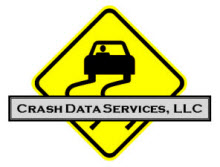Vehicle Event Data Recorders (EDRs), commonly referred to as Black Boxes, are part of a vehicle's airbag control module or powertrain control module. EDRs can be configured to record a variety of data when a vehicle is involved in a crash event. The data sets range from pre-impact speed and brake use, to airbag and restraint system performance. While the data that is recorded is tremendously helpful in determining how a traffic crash occurred, it was not until recently that a standard existed for what data was recorded and how it was recorded.
From 1998 to 2001, the National Highway Traffic Safety Administration (NHTSA) sponsored a working group specifically tasked with the study of EDRs. After years of evaluation, NHTSA released a formal Notice of Proposed Rulemaking in 2004. This notice declared NHTSA's intent to standardize EDRs. It was not until August 2006 that NHTSA released its final ruling (49 CFR Part 563). The ruling was lengthy (207 pages), consisting of not only definitions and mandatory EDR standards, but also acted as a formal reply to the dozens of petitions received by NHTSA after the 2004 notice.
Since there was already an overwhelming trend for voluntary EDR installation, the ruling did not require manufacturers to install EDRs in vehicles produced for North America. Based on its analysis, NHTSA estimated that by 2010, over 85% of vehicles would already have EDRs installed in them, but warned that if the trend did not continue, the agency would revisit their decision and possibly make installation a requirement.
The mandate did, however, provide a minimum standard for the type of data that EDRs would be required to record: at least 15 types of crash data. Some of the required crash data include pre-crash speed, engine throttle, brake use, measured changes in forward velocity (Delta-V), driver safety belt use, airbag warning lamp status and airbag deployment times.
In addition to the required data, NHTSA also set standards for 30 other types of data if EDRs were voluntarily configured to record them. For example, if a manufacturer configured an EDR to record engine RPM's or ABS activity, then the EDR would have to record 5 seconds of those pre-crash data in half-second increments.
Besides the requirement that all data be able to survive a 30 MPH barrier crash and be measured with defined precision, NHTSA also required that all manufacturers make their EDR data publicly available. As of September 2008, only General Motors, Ford and Daimler Chrysler had released their EDR data to be publicly read.
In the August 2006 ruling, NHTSA set a time table for all vehicle manufacturers to be in compliance with the new EDR standards. The compliance date was originally set for all vehicles manufactured after September 1, 2010. NHTSA has since updated its ruling (49 CFR Part 563 Update) to give vehicle manufacturers until September 1, 2012 to be in compliance with the original ruling. EDR data is already changing the landscape of traffic accident investigation and, with the EDR compliance date looming, stands to become an indispensible resource.
Shawn Gyorke is a Certified Accident Reconstruction Expert and Crash Data Retrieval Analyst with over 9 years law enforcement experience. Shawn is also the owner of Crash Data Services, LLC, an expert witness service specializing in accident reconstruction and EDR downloads.
See Mr. Gyorke's Profile on Experts.com.
©Copyright - All Rights Reserved
DO NOT REPRODUCE WITHOUT WRITTEN PERMISSION BY AUTHOR.










